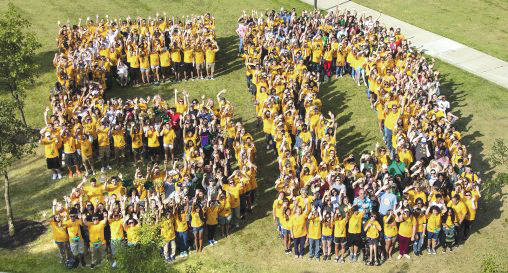
FAIRBORN — Wright State University community members are invited to shape the university’s future through a new strategic planning process that the university hopes will become part of the leadership culture.
The strategic planning process is intended to start an ongoing dialogue among members of the campus community that encourages a continuous reflection and revision of the community’s hopes and priorities.
“Strategic planning includes specific plans, but really, it is an ongoing, continuous effort. A good strategic planning process allows for adaptation and revision. It is not static,” said David Bright, co-chair of the Strategic Planning Steering Committee and chair of the Department of Management and International Business.
Wright State President Cheryl B. Schrader said the conversations that will take place during the planning process offer community members a chance to engage with others across the university in meaningful ways.
“We will use the process to reconnect to each other across the university and to connect as well with the community,” she said.
The planning process that will be used to gather community input and develop the strategic plan is critical to Wright State as the university looks to the future.
“In the process of creating this strategy, we hope to nurture and strengthen the social infrastructure of the institution so that we have the social capital ready to execute the strategies in the plan,” Bright said.
Schrader announced that 33 Wright State employees, students and alumni as well as Dayton community leaders have agreed to serve on the Strategic Planning Steering Committee.
The committee members will guide the strategic planning process as the university develops a new strategic plan, The Wright Path 2025: Pride, Transformation, Potential.
The committee will guide the university’s efforts to include a wide range of perspectives from the Wright State family and the broader community. The steering committee is co-chaired by Bright, Schrader and Michael Wiehe, director of the Applied Policy Research Institute at Wright State.
The strategic planning process will guide Wright State into the future by creating a vision and focus that directly aligns resources with the community’s values, strengths and the strategy built around them.
The planning process will first lead to an updated vision, mission and values statement for Wright State, a strategic plan that is directly aligned with university resources, and metrics that can measure the outcomes of those strategies. It will guide decisions at the university on a day-to-day basis.
“We will come up with a plan that’s implementable, accountable and transformative,” Wiehe said.
The goal is to deliver a strategic plan to the Board of Trustees by October 2018 for its approval.
Wright State will use a dialogic-based process, or one that involves many conversations, and uses the collective wisdom of the Wright State community, Bright said.
“We will use a process that maximizes opportunities so that every voice can be heard,” he said “We need to listen carefully and trust one another.”
The strategic planning process will include dozens of public forums, focus groups, and workshops throughout the spring, summer, and fall semesters at the Dayton and Lake Campuses. The committee aims to gather input from thousands — including faculty, students, students, retirees, alumni and community stakeholders — to help determine the future of Wright State.
“There will be plenty of opportunities for people beyond the steering committee to be involved in the planning process,” Schrader said.
The first phase of the planning process will focus on gathering community input to develop an updated vision, mission and values statement for Wright State. The statement should reflect a compelling perspective about the core identity of Wright State and its future.
Using a process called Appreciative Inquiry, the committee will ask community members to share moments of success and positive stories of their experiences with Wright State. The committee will also seek to learn what people think are the university’s strengths and the value Wright State provides to constituents and the community.
Numerous forums will take place in different locations at both the Dayton and Lake Campus, on different days of the week and at different times of day to maximize participation.
“There will be numerous opportunities for community members to participate and give feedback,” Wiehe said.
In April, the committee will host an event to unveil to the community the updated vision, mission and values statement and a draft strategy statement.
From May through September, the committee will use what it learns during the spring semester to further develop strategy statements, priorities and goals, as well as metrics to measure the effectiveness of the strategies.
The planning process will be continuous and will put Wright State in a position to thrive in higher education’s changing environment, help the university achieve financial sustainability, and foster a campus atmosphere that provides our graduates with opportunities to excel in fields that define the future.
The steering committee will kick off its public activity on Friday, Feb. 2, with a community dialogue in James F. Dicke Hall at the Wright State Lake Campus. The event will take place from 10 a.m. to noon and will focus on Wright State’s mission and purpose from the Lake Campus perspective. Participants are asked to register online.
Individuals can stay up to date with the planning process by visiting wright.edu/strategicplan.


